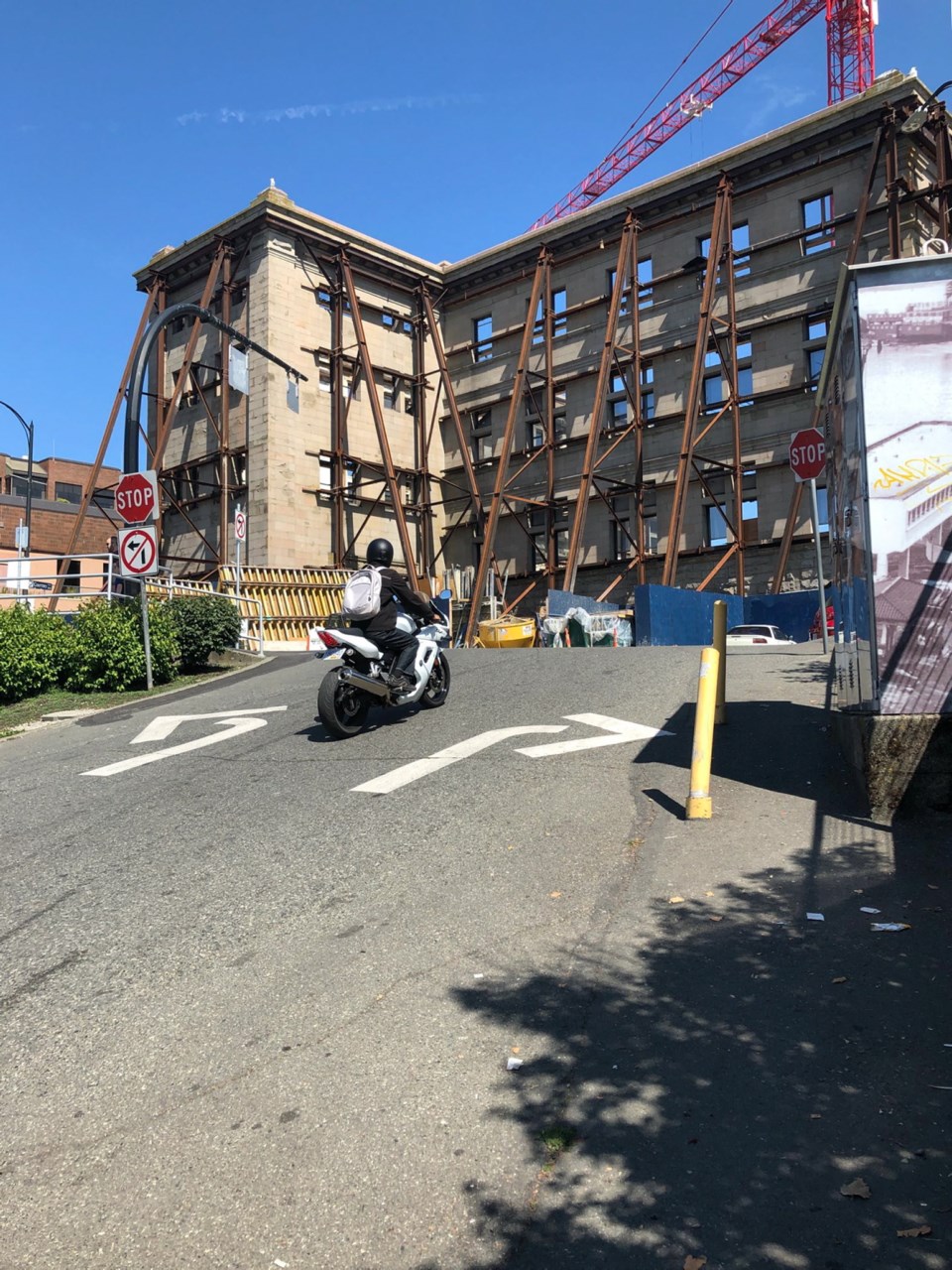Victoria’s ever-expanding network of dedicated bike lanes is designed to make cycling safer for all concerned. Sometimes they work, sometimes they don’t. Sometimes, a bike lane can create an illusion of safety while actually increasing the level of danger, and increasing the risk to all, including those on bicycles.
Take, for example, the ramp that leads up to Wharf Street from the parking lot next to the seaplane terminal. It is poorly designed and an accident waiting to happen.
This is not a rant against bike lanes. They serve a purpose when they allow our roads to be more equitably, and more safely, shared. They are in use in cities around the world, and yes, they serve a purpose here as well.
The catch, however, is that they must be easy for everyone to see, easy for everyone to understand, and easy for everyone to use. The intersection on Wharf fails on every measure.
The intersection is at the top of a short, steep hill. The arrows on the pavement tell drivers to take the left lane to turn left, and the right lane to turn right. At the top of the hill, a sign indicates that no left turns are allowed. If two vehicles were heading up the hill beside each other, the one on the left will need to merge to the right, or so it seems.
Ah, but the fun is just beginning.
The ramp meets Wharf on a corner, which hurts visibility. There is a railing as well as vegetation and poles that further obscure the driver’s view. Tourists and locals alike might gather on either side of the ramp to watch the action in the harbour. They block the view as well.
So drivers need to look through or past these distractions, all the while trying to ensure that their vehicles do not slip backward. (Think it’s tough with an automatic? Try it with a manual transmission.)
And what do drivers need to look for? Pedestrians coming from both directions. Vehicles coming from the left — because remember, since the symbol on the sign matters more than the one on the pavement, you can only turn right now. And they need to watch for cyclists, coming from both directions.
Pedestrians are moving at a pedestrian’s typical pace. Vehicles are typically not moving fast either, because there is usually a backlog of cars on that stretch of the street.
The vehicles are easy to see. The bicycles are another matter. Some cyclists go slow because it’s a busy area, but others go faster, apparently believing that they are safe in the new bike lane. That false sense of security is risky, especially in an area where the driver’s view is impaired.
A driver leaving the parking lot could check one way for pedestrians and cars, check the other, and then double-check — and still pull onto Wharf and into a collision with a cyclist. Be warned.
This design might have made sense on paper, but unless it is fixed, it will cause property damage and personal injury. There will be no escaping the danger posed.
As more and more bike lanes have been added in the downtown core, drivers have needed to adjust, and get used to the new procedures, such as restrictions on turns and specific lights for specific forms of transportation.
But this is different; it’s not reasonable to expect drivers to get used to an inherently flawed system.
Something needs to be done, and a traffic light might be the safest solution. It might cause more traffic backups on Wharf, but that would be a small price to pay for the added safety that the control would provide.
If not a light, what will the city do to reduce the danger?



